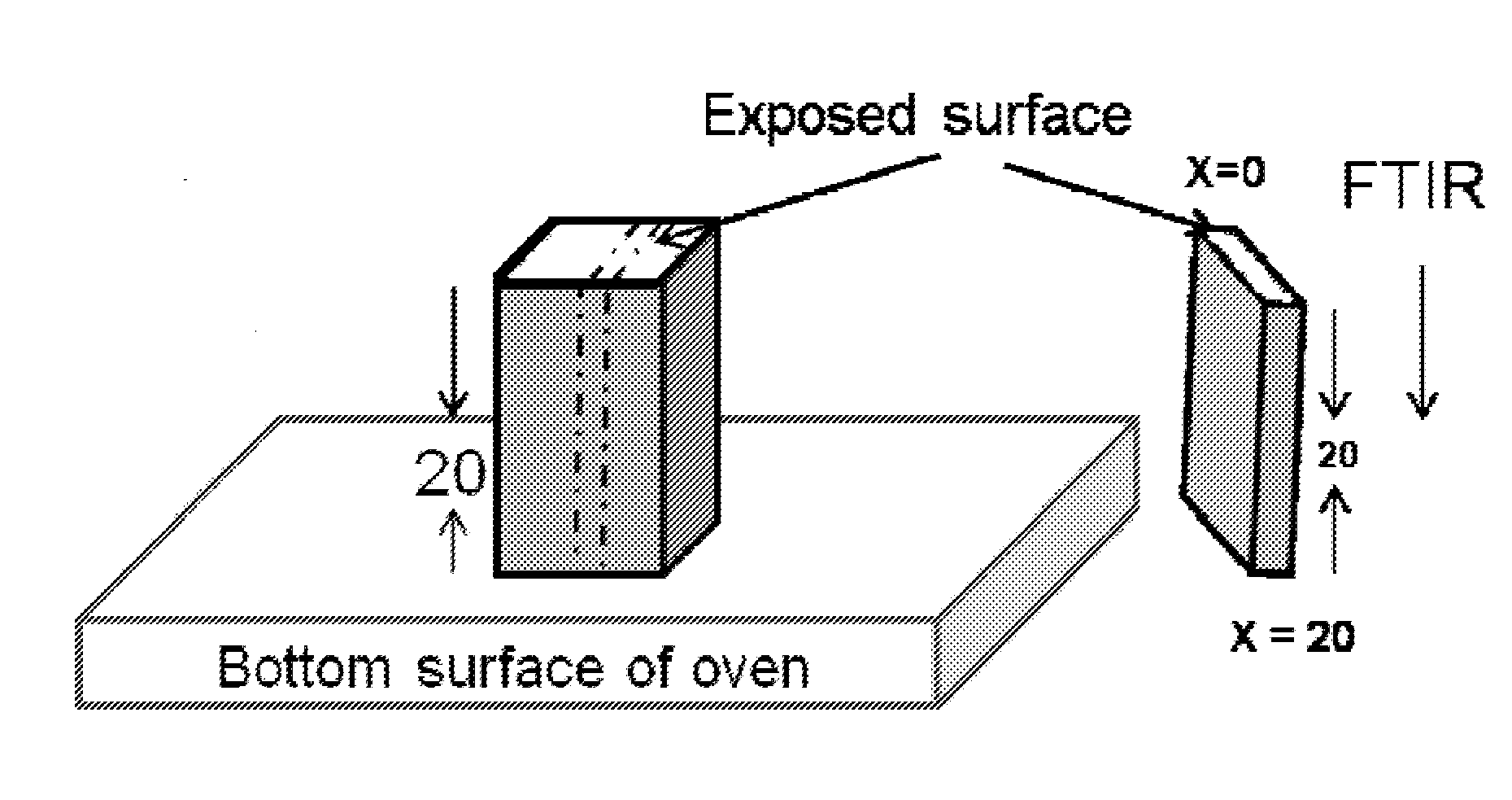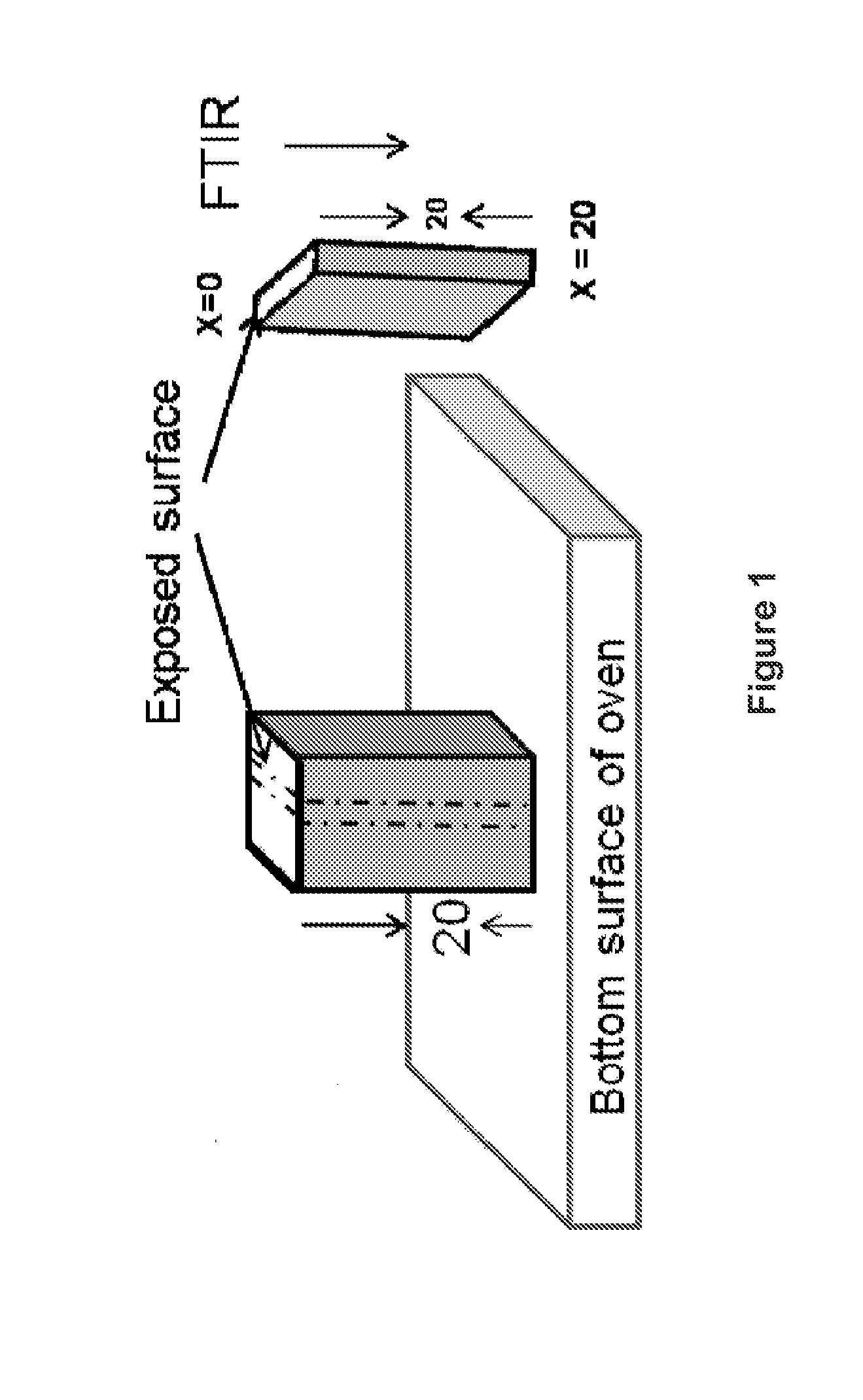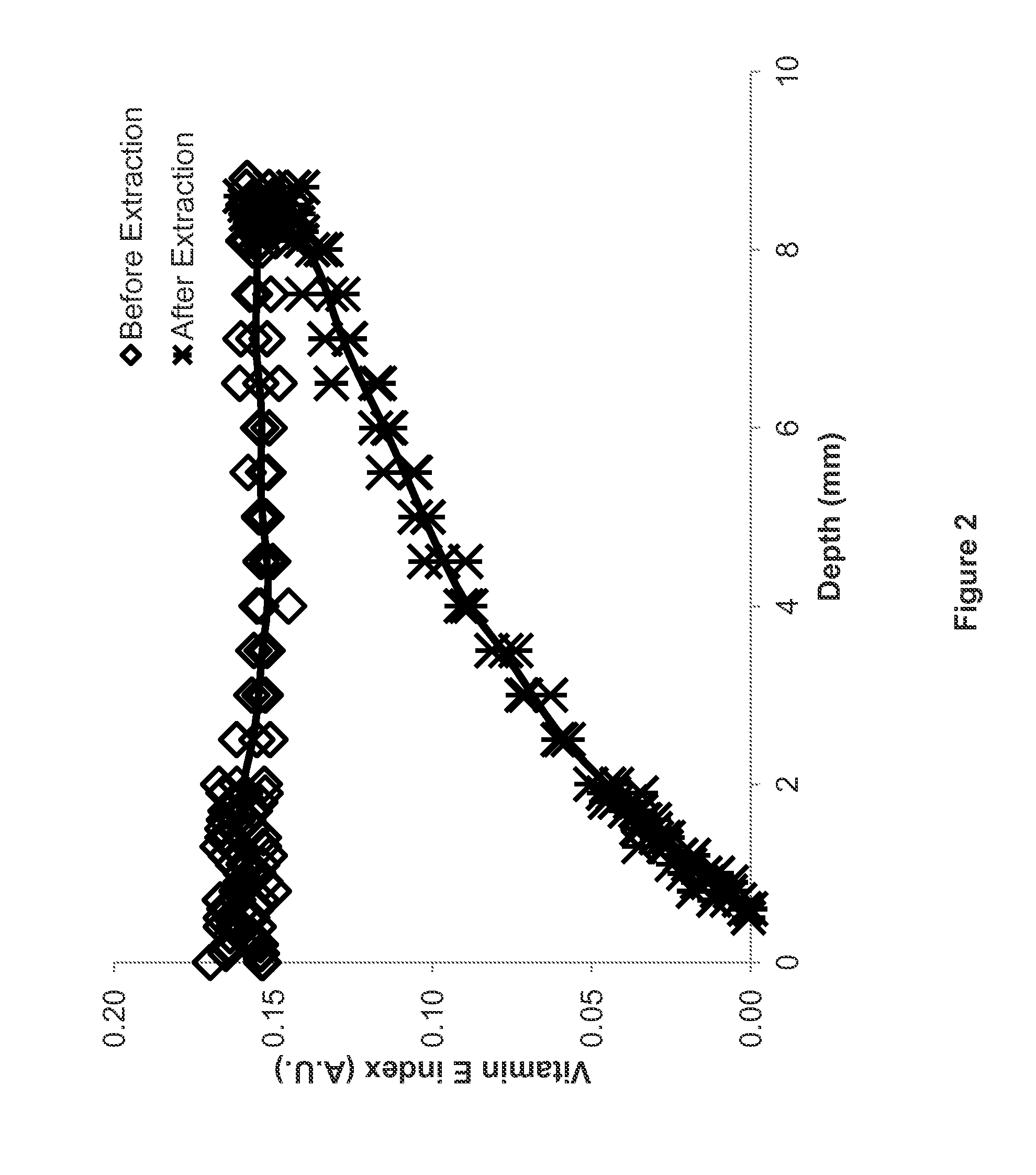Spatial control of additives by high temperature
a technology of additives and spatial control, applied in the field of making crosslinked total joint implants by controlling the spatial control of anticrosslinking agents, can solve the problems of additive extraction, oxidation of polymers, evaporation of additives, etc., and achieve the effects of increasing grafting of additives, increasing cross-linking, and decreasing elution
- Summary
- Abstract
- Description
- Claims
- Application Information
AI Technical Summary
Benefits of technology
Problems solved by technology
Method used
Image
Examples
example 1
Surface Extraction of Vitamin E from Vitamin E-Containing UHMWPE Pucks Using a Nitrogen Convection Oven
[0190]A 5 wt % concentration mixture of vitamin E with UHMWPE (GUR 1050) was prepared by first mixing isopropyl alcohol (IPA) with vitamin E (Acros™ 99% D,L-α-tocopherol, DSM Nutritionals, NJ), then mixing the vitamin E-IPA solution with virgin UHMWPE powder, then evaporating off the solvent in a vacuum oven at an elevated temperature (approximately 60° C.). The mixture was diluted with GUR 1050 to obtain GUR 1050 with 1 wt % vitamin E.
[0191]Two pucks (diameter 10 cm, thickness 1-1.1 cm) of the 1 wt % vitamin E-containing UHMWPE blend were prepared via compression molding. The powder was pre-heated in a vacuum oven under partial vacuum / inert gas at 190-210° C. for approximately 2 hours. Then, the mold / powder was transferred to an automatic press (3895 Auto-M, Carver, Wabash, Ind.) where it was sintered, then compressed to 20 MPa at about 194° C. for 10 minutes, then cooled to room ...
example 2
Radiation Cross-Linking of a Surface Extracted UHMWPE Containing Vitamin E
[0194]A 5 wt % concentration mixture of vitamin E with UHMWPE (GUR 1050) was prepared by first mixing isopropyl alcohol (IPA) with vitamin E, then mixing the vitamin E-IPA solution with virgin UHMWPE powder, then evaporating off the solvent in a vacuum oven at an elevated temperature (approximately 60° C.). The mixture was diluted with GUR 1050 to obtain GUR 1050 with 0.75 wt % vitamin E.
[0195]Two pucks (diameter 10 cm, thickness 1-1.1 cm) of the 0.75 wt % vitamin E-containing UHMWPE blend were prepared via compression molding. The powder was pre-heated in a vacuum oven under partial vacuum / inert gas at 190-210° C. for approximately 2 hours. Then, the mold / powder was transferred to an automatic press (3895 Auto-M, Carver, Wabash, Ind.) where it was sintered, then compressed to 20 MPa at about 194° C. for 10 minutes, then cooled to room temperature under pressure. Then, the puck was cooled in approximately 1.5 ...
example 3
Optimal Wear Resistance at the Surface
[0201]A 5 wt % concentration mixture of vitamin E with UHMWPE (GUR 1050) was prepared by first mixing isopropyl alcohol (IPA) with vitamin E, then mixing the vitamin E-IPA solution with virgin UHMWPE powder, then evaporating off the solvent in a vacuum oven at an elevated temperature (approximately 60° C.). The mixture was diluted with GUR 1050 to obtain a vitamin E-blended GUR 1050 resin powder with 1 wt % vitamin E.
[0202]Two pucks (diameter 10 cm, thickness 1-1.1 cm) of the 1 wt % vitamin E-containing UHMWPE blend were prepared via compression molding. The powder was pre-heated in a vacuum oven under partial vacuum / inert gas at 190-210° C. for approximately 2 hours. Then, the mold / powder was transferred to an automatic press where it was sintered, then compressed to 20 MPa at about 194° C. for 10 minutes, then cooled to room temperature under pressure. Then, the puck was cooled in approximately 1.5 hours under pressure.
[0203]Two pucks were pla...
PUM
| Property | Measurement | Unit |
|---|---|---|
| thickness | aaaaa | aaaaa |
| wt % | aaaaa | aaaaa |
| temperature | aaaaa | aaaaa |
Abstract
Description
Claims
Application Information
 Login to View More
Login to View More - R&D
- Intellectual Property
- Life Sciences
- Materials
- Tech Scout
- Unparalleled Data Quality
- Higher Quality Content
- 60% Fewer Hallucinations
Browse by: Latest US Patents, China's latest patents, Technical Efficacy Thesaurus, Application Domain, Technology Topic, Popular Technical Reports.
© 2025 PatSnap. All rights reserved.Legal|Privacy policy|Modern Slavery Act Transparency Statement|Sitemap|About US| Contact US: help@patsnap.com



